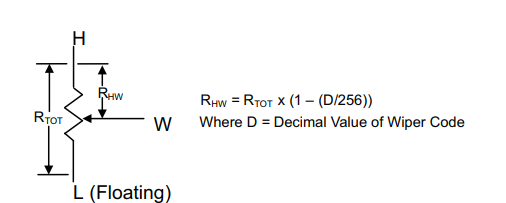Tool/software:
Hello team,
We are planning to use the digital potentiometer TPL0102-EP in one of our products.
The same will be used in the feedback network of a DC DC Converter to adjust the voltage.
RPMA-4.5/OF is the DC DC Converter we are planning to use.
We need an output voltage of +5V to +18V. (1V step)
So the value of the Trim resistor will be 8.57K to 0.91K.
Can you please clarify the following doubts we are having?.
1). Can I use the digipot TPL0102-EP for our application?.
2). What is the maximum allowable current through this digipot?.
3). The tolerance of the digipot is 20%, is there any other device available will low tolerance?.
4). In our case we will be using only HA and WA. HA will be connected to TRIM and WA will be connected to the +VOUT of the DC DC Converter. LA, HB, WB and LB will be left floating
5). Is there any problem if we connect the 2 channels of TPL0102-EP in series.
6). Is it possible to get 0E resistance from the digipot (considering wiper resistance).
7).



